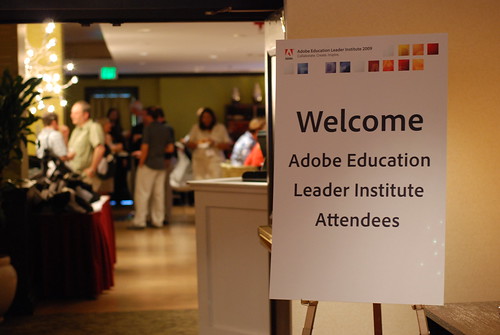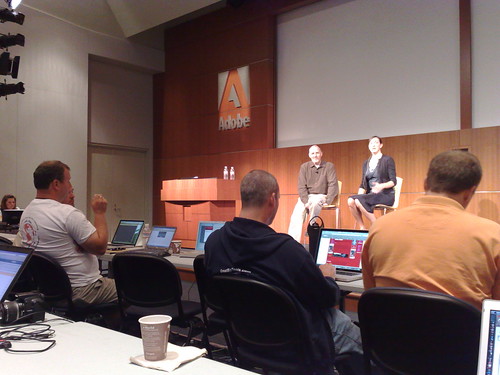 I was in a staff meeting at school last week where we were given a presentation outlining 10 common myths about copyright. I thought it not a bad summary of what many teachers just assume to be true. Ironically, I’m reproducing it below basically word for word as it was presented to me, but I’m told on good authority that the original creator has authorised its use for reposting.
I was in a staff meeting at school last week where we were given a presentation outlining 10 common myths about copyright. I thought it not a bad summary of what many teachers just assume to be true. Ironically, I’m reproducing it below basically word for word as it was presented to me, but I’m told on good authority that the original creator has authorised its use for reposting.
The other thing I really would have liked to have had included in the conversation was a little more talk about what the alternatives are. It’s one thing to talk about what you can’t do legally, but unless you provide a list of workable alternatives, simply making “though shalt not” pronouncements is a bit pointless. Copyright has a place, but in a digital world that place is changing dramatically. There is an obvious tension between the inputs and the outputs of copyright… if you are a content creator, you want the output of your work to be protected so others don’t simply steal your stuff, however, unless you can borrow and remix content from others, you will have very little to work with in the first place.
If you’ve not seen it, take a look at an amazing comic book produced by the Center for the Study of the Public Domain at Duke University. Issue 1, entitled Bound By Law, looks at the copyright issues faced by documentary filmmakers, and is an extremely insightful look at the pros and cons of copyright and how it can often unintentionally stifle the very same creativity it is supposed to be protecting. I think it explains it very well, and it should be read by all high school students (and teachers!). You can download a copy (Under a Creative Commons licence of course) from www.law.duke.edu/cspd/comics.
For another lucid overview of the real issues behind copyright law, you really can’t go past the TED Talk by Larry Lessig (founder of Creative Commons) called How Creativity is Being Strangled by the Law. His final summation of the tensions that exist between the extremist viewpoints of “Let’s protect everything” vs “Everything should be free” is excellent, and he makes it very clear that, while the law might not be the ass we sometimes think it is, the notion of copyright certainly needs a good injection of balance and common sense if it is to remain relevant and workable.
Anyway, for what it’s worth, here are the 10 myths about copyright, as presented by my school last week (and specifically applied to Australian copyright law)
1. It’s OK – I found it on the net
The fact that something is on the internet doesn’t mean that it’s not protected by copyright or that you can use it as you wish. Material on the net is protected to the same extent as anything on paper or in any other type of format. In many cases, however, copyright owners put a statement on to websites stating how people can use the material – the permission they give can often be quite extensive, but don’t assume that it will cover what you are planning to do with the material.
2. We can use it – it doesn’t have a copyright notice on it
While it is recommended copyright owners should put copyright notices on their material, it is not compulsory, and it doesn’t affect whether or not something is protected. We will have a compliance issue to deal with whether or not the material has a copyright notice on it.
3. We’re non-profit so it’s OK
In some narrow cases, the non-profit statues of an organisation can affect its ability to rely on exceptions. However, there is no general rule to the effect that it’s OK to use copyright material for non-profit purposes.
4. It’s all right we’re attributing the creator
If you’re using copyright material, you do generally have to attribute the person or people who created the material. This is a general moral rights obligation. However, you’ll still have copyright issues to consider; attributing the creator doesn’t change this.
5. We only need to worry about copyright if we’re charging money
In some narrow cases, the fact that an organisation is charging money can affect its ability to rely on exception to the general rule that you need permission if you want to use copyright material in one of the ways reserved to the copyright owner. However, there is no general rule to the effect that you don’t have to worry about copyright if you’re not charging people for the material you are using.
6. The copyright owner should see this as good promotion
Whether or not a copyright owner sees your use of their material as good promotion is their decision, not yours, and you can never be sure they’ll see the situation in the same light as you do. Also, even if the copyright owner does see your use of the material as good publicity, don’t assume that this means that they’ll give you permission to use it for free. Many copyright owners make their living from the licence fees they charge, and they will often want to know beforehand how you want to use the material. If you don’t get a clearance when you’re supposed to, you’ve still infringed copyright – which may, for the College, work out as bad publicity.
7. It’s OK – I’m using less than 10%
There is no general rule that you can use less than 10% without permission. If you’re using any ‘substantial’ part of a copyright owner’s material – whether you’ve made changes to it or not – you’ll have to deal with the copyright issue. In the context, a ‘substantial’ part is any part that is important, distinctive or essential. It doesn’t have to be a large part to be ‘substantial’ in a copyright sense.
8. It’s all right – I’ve changed it
There are two common, but wrong, beliefs in this area. First, there is no general rule to the effect that it’s OK to use copyright material if you change it by 10% or more. Second, there is no general rule to the effect that you can use copyright material if you make five or more changes. As noted above, if you’re using any part that is important, distinctive or essential, you have to deal with copyright issues.
9. It’s OK – we paid for it
The fact that the College paid a contractor for something – such as a report or a series of photos – will have a bearing on how we can use it. However, this is not by itself a guarantee that we own copyright in it, and can use it as we like. Similarly, the fact that we own a physical item – such as a painting or photograph or a DVD – does not mean you can use it as you like (such as copying it or screening it).
10. No one will ever find out
If you know, and your colleagues know, why mightn’t the copyright owner – or the collecting society that represents them – get to find out too? Organisations that infringe copyright are always at risk from disgruntled employees, let alone the other people they come in contact with. Also, copyright owners have six years to take action for an infringement – that’s a long time for information to come to light.

 I’m finally back home from a fantastic week in San Jose at the
I’m finally back home from a fantastic week in San Jose at the  Tuesday started early for me with a Photoshop exam. This was taken as part of the
Tuesday started early for me with a Photoshop exam. This was taken as part of the  Thursday was another full day of learning, with a intense session run by Adobe’s
Thursday was another full day of learning, with a intense session run by Adobe’s  The rest of Friday morning was a general wrap up of the event, with feedback and a debriefing session between the AELs and the Adobe folk. It was kind of sad to have it all come to an end, but we eventually said our goodbyes and all went our separate ways. The sessions were all recorded with Adobe Connect, as well as a ton of
The rest of Friday morning was a general wrap up of the event, with feedback and a debriefing session between the AELs and the Adobe folk. It was kind of sad to have it all come to an end, but we eventually said our goodbyes and all went our separate ways. The sessions were all recorded with Adobe Connect, as well as a ton of  She was recently selected to be part of the
She was recently selected to be part of the